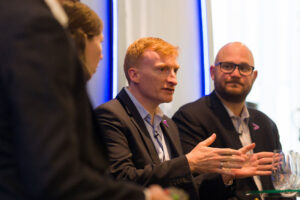Almost one year into the coronavirus pandemic, businesses are considering how their employees may safely return to physical workplaces.
It is difficult to see an end to remote working arrangements without a widely available coronavirus vaccine. Yet participants on a recent Procurement Leaders virtual roundtable, on the topic of real estate and facilities management in the Asia Pacific region, were adamant that physical workplaces will remain a feature of the overall working environment.
Facilities managers will play a pivotal role in ensuring employees can return to those workplaces safely. The roundtable participants shared three ways they were attempting to fulfil that role.
1. Rationalising real estate portfolios
At the height of the pandemic, in line with government guidelines to minimise the spread of coronavirus, organisations restricted facilities access to essential staff. In the intervening months businesses have realised many employees, particularly those normally based in offices, can perform their work remotely.
Where possible working from home is expected to stay. Organisations are planning hybrid workplace models for 2021, combining remote working with considerably smaller facilities portfolios.
One food and beverage company plans to relocate some of its offices to smaller premises, reducing its facilities footprint by an estimated 40%. A business services firm, meanwhile, expects to shrink its workplace footprint by around one-third because it is shifting to long-term remote working.
“The question is no longer when you come to work but why you come to work,” said the head of property services at a consumer goods company. In the future offices will be used as collaboration spaces, for when contact via video conferencing software is inadequate. How employees will collaborate face-to-face while maintaining social distancing remains to be seen.
2. Deploying new technologies
Digital procurement managers indicated they will accelerate the adoption of remote working tools more than they will any other digital project, according to a Q3 2020 survey by Procurement Leaders.
Businesses now depend on virtual conferencing platforms such as Microsoft Teams, Skype and Zoom and for their day-to-day running. Participants on the call highlighted the use of augmented and virtual reality (VR) to facilitate remote working, too.
The aforementioned consumer goods company has implemented VR software for facilities walkdowns, in addition to health and safety inspections and training. Similarly, the food and beverage company has been able to move from physical to virtual product testing at its factories and sites thanks to the use of VR software.
Technology is also being used to keep employees safe while using workspaces. Like many public venues, the consumer goods company has put in place a system of QR codes for employees entering its facilities.
The check-in data collected through this system allows the company to monitor usage patterns of its facilities and predict how those patterns might change in line with coronavirus infection rates. At present, the company is running its facilities at an average capacity of around 40% in order to maintain social distancing.
Another organisation is discussing the use of a proprietary contact tracing mobile app, which would allow it to know who has come into contact with an infected person within its office areas. The idea is still under review. Were the company to deploy such an app, managers could face resistance from some employees over privacy concerns.
3. Adjusting the scope of facilities services
Reflecting the reduction in employees’ usage of office spaces, organisations have reduced the use of cleaning, reception and catering services at these facilities.
Yet at manufacturing and production sites, which are less suited to remote working, buyers have widened the scope of work required of their facilities management service providers. For example, they have increased the use of disinfections and temperature checks for visitors while ordering additional personal protective equipment for employees.
To offset such volatility in demand, buyers should negotiate flexibility into future facilities services contracts. During a previous Procurement Leaders roundtable, held in Q2 2020, one professional services company described how it includes a clause in its facilities contracts that allows it to scale services up or down according to demand. As per this clause, any increase or decrease to the scope of work within a 5% range can be made at no cost.
Flexibility can also be achieved by unbundling purchases, the benefits of which were espoused during the same discussion by one facilities procurement manager at a financial services company. “Each line-item has a cost, so if you take out a building you take out all the other associated costs too.”





















